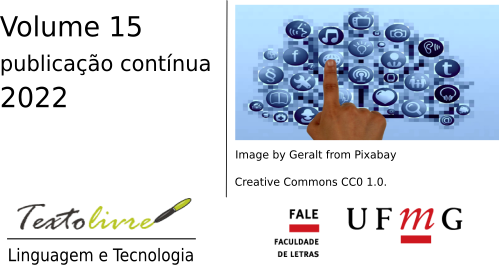Neurodidactics
an experience in inclusive education applied to ICT
DOI:
https://doi.org/10.35699/1983-3652.2022.40509Keywords:
Inclusion, Neurodidactics, TechnologiesAbstract
Learning is based on the approaches of neurodidactics, to respond to the diversity of learning needs with the use of technological resources, as the main option to guarantee the educational service, support the community, provide protection and emotional support in children, girls and adolescents with disabilities (NNACD). It proposes an analysis that allows knowing the application of accessibility to learning in five educational institutions of Fe y Alegría, belonging to three localities of Ecuador with 212 NNACD, who, in a specific way of attention, develop their learning for life, through the qualitative research, related to Person Centered Planning (PCP). The information has been organized into three levels: equipment and connectivity, psychomotricity of the NNACD and pedagogical delivery, which allow defining the different skills assumed by the NNACD according to specific disabilities and with respect to technological accessibility. The main resources used are tablets, smartphones and computers. The use of desktop computers allows a greater field of work, especially in students with intellectual disabilities and infantile cerebral palsy, who require additional technological adaptations.
Downloads
References
ACOSTA-VARGAS, P. y col. Accessibility in Native Mobile Applications for Users with Disabilities: A Scoping Review. Applied Sciences, v. 11, n. 12, pág. 5707, jun. 2021. DOI: 10.3390/app11125707. Disponible en: https://www.mdpi.com/2076-3417/11/12/5707. Acceso en: 4 oct. 2022.
BORJA, C. Arte en la discapacidad: un doble beneficio, p. 24-25, jun. 2013. Disponible en: https://connect.usfq.edu.ec/sites/default/files/2020-07/0013_para_el_aula_06.pdf. Acceso en: 5 oct. 2022.
FE Y ALEGRÍA. Guía metodológica para la atención educativa a la diversidad. Quito: Fe y Alegría, 2020.
FERNÁNDEZ PALACIO, A. Neurodidáctica e inclusión educativa. PublicacionesDidácticas, v. 80, n. 1, p. 262-266, feb. 2017. Disponible en: http://publicacionesdidacticas.com/hemeroteca/articulo/080051. Acceso en: 4 oct. 2022.
GERHARD, F. y GERHARD, P. Neurodidáctica. [S.l.: s.n.], 2003. Disponible en: https://www.investigacionyciencia.es/revistas/mente-y-cerebro/esquizofrenia-356/neurodidctica-3910. Acceso en: 4 oct. 2022.
HERNÁNDEZ SAMPIERI, R. y FERNÁNDEZ COLLADO, C. Metodología de la investigación. Edición: P. Baptista Lucio. Sexta edición. México D.F.: McGraw-Hill Education, 2014.
MINISTERIO DE EDUCACIÓN. Currículo de los niveles de educación obligatoria. [S.l.: s.n.], 2016.
PANIAGUA G, M. N. NEURODIDACTICA: UNA NUEVA FORMA DE HACER EDUCACIÓN. Fides et Ratio - Revista de Difusión cultural y científica de la Universidad La Salle en Bolivia, v. 6, n. 6, p. 72-77, sep. 2013. Disponible en: http://www.scielo.org.bo/scielo.php?script=sci_abstract&pid=S2071-081X2013000100009&lng=es&nrm=iso&tlng=es. Acceso en: 4 oct. 2022.
PUERTAS, P. La motricidad fina en el aprendizaje de la pre-escritura en los niños y niñas de 5 años de primer año de educación general básica en la Escuela Fiscal Mixta “Avelina Lasso de Plaza”. Quito: Universidad central del Ecuador, 2017.
Downloads
Published
How to Cite
Issue
Section
License
Copyright (c) 2022 Karina Delgado Valdivieso, Janio Jadan Guerrero

This work is licensed under a Creative Commons Attribution 4.0 International License.
This is an open access article that allows unrestricted use, distribution and reproduction in any medium as long as the original article is properly cited.











